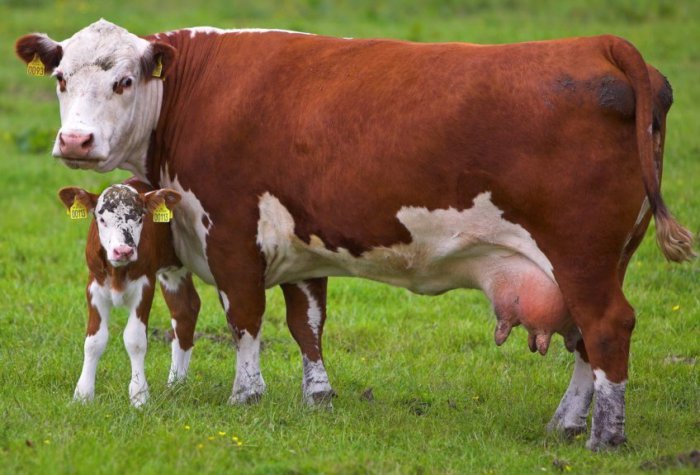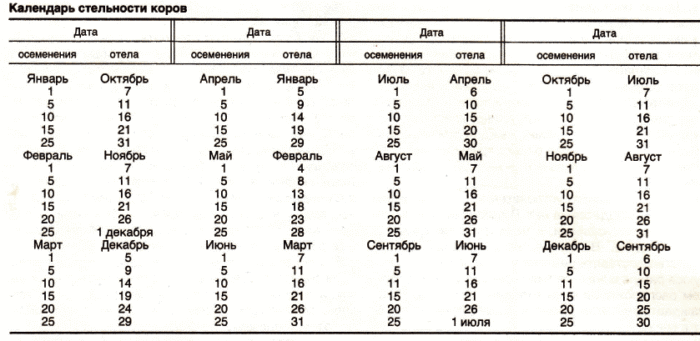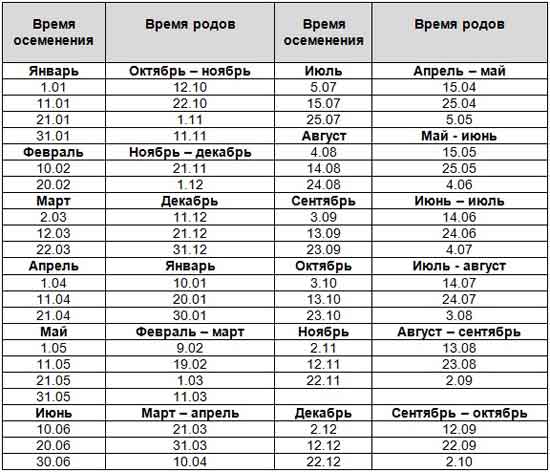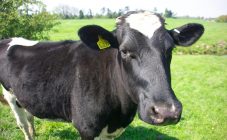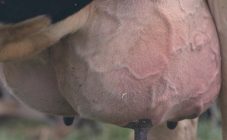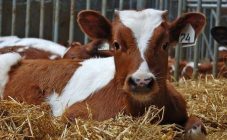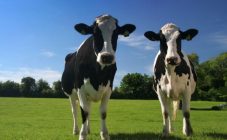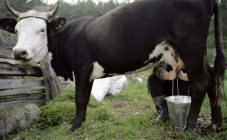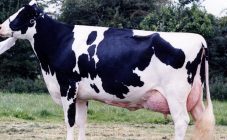Content:
The birth of a calf is an important event for the breeder. You need to prepare for it in advance. A lot needs to be done for a healthy calf to be born. In this case, the preparation plan depends on the expected date of birth. The article will discuss the methods that are used to determine when a cow will calve.
Breeding and care rules
The cow has a cyclically repeating sexual cycle. The schedule consists of the following parts:
- Heat comes first.
- Then - hunting.
- After that, the female ovulates.
In the case when mating occurs during the ovulation period, pregnancy occurs. On average, its duration is 285 days. In practice, slight deviations from this period are possible. It is considered normal when the gestation period lasts from 285 to 300 days.
At a certain stage, a pregnant cow starts up. From now on, she must follow special rules in order for the calving to proceed successfully.
It is important to correctly determine the launch day. At the same time, one of the simplest ways to determine it is that you need to count seven and a half months from the moment of conception.
It is necessary to control the fact of pregnancy of cattle. If she is expecting a calf, she is usually additionally fed from the very beginning of pregnancy. When the fifth month begins, the milk yield of the cows gradually decreases.
At the same time, you need to change the diet of the animal. From this point on, it is necessary to feed the cow only with dry wood.
For those cows that are characterized by high milk production, stopping milking is a little different. When the milk yield per day is equal to four liters, the number of milkings is reduced to two per day. Then the amount of milk received will continue to decrease. It is required to stop milking only after the milk yield drops to one liter.
It is customary to start launching approximately 70 days before the expected calving date. A cow, feeding on dry wood, regulates the composition of the necessary vitamins and minerals it receives.
During this time, it is not allowed to give the animal green grass or feed concentrates. The cow continues to be taken to the pasture, however, the time spent there is gradually reduced.
If the launch time falls on the hottest period of summer, the cow continues to be taken to the pasture. When it starts up during winter, it is allowed to run for three or four hours.
Calving time of the cow after insemination
In order to find out approximately the date of birth of a calf, you can calculate it using the following formula:
(Calving date) = ((Day of month) + 11) / (Number of month - 3)
In the formula under consideration, the following designations are used:
- calving date - the calf is expected to be born on this day;
- day of the month is the day of the month when fertilization took place;
- the month number is equal to the ordinal number of the month since the beginning of the year (January corresponds to one, February to two, and so on).
Let's give an example of calculation. Let's say a cow was inseminated on September 15th. In this case, the formula is applied as follows:
(Calving date) = (15 + 11) / (9 - 3) = 28/6
With the help of calculations according to this formula, it was obtained that calving will occur approximately on June 28th.
A situation is possible when the first amount will exceed the number of days of the month. In this case, the number must be reduced by the indicated amount.
The number of days in different months is different, but remember that this is an approximate date, not an exact date.
In addition to using the formula given here, there is another way. In this case, the calving calendar is used to determine the desired date.
Pregnancy and Calving Calendar
When determining the expected date of birth of a calf, you will need a table - a calving calendar of cows by the date of insemination. In this case, there is no need to carry out calculations using any formulas.
The calving and insemination table for cows consists of four columns. The first and third are the month and date of the day the insemination took place. The second and fourth columns indicate the month and date of the day on which calving is expected to occur.
When you look at the cow pregnancy calendar, you can see that it does not indicate any dates of insemination, but only those that fall on the first, eleventh and thirty days. This is done so that the size of this table is not too large.
In addition, it must be remembered that it is hardly possible to accurately predict the date of calving in seventy days, the table indicates it with an accuracy of ten days. Therefore, it is not necessary to indicate all possible dates when insemination could have occurred.
Calving calendar
The following is a table that you can use to determine the date a calf should be born.
The values in parentheses here are for leap years. If a number is specified without parentheses, then it refers to a year that is not a leap year.
How the fetus develops
Once insemination occurs, the calf does not exist yet. The embryo gradually develops until it is born.
This is how it works:
- During the first month, various parts of the body begin to form: eyes, mouth. At this time, instead of the skin, you can see the vascular network. The embryo weighs no more than one gram.
- The second month is the time when the organs of vital activity begin to be created. At the same time, the placenta begins to appear. The size and weight of the embryo increases. At the end of this month, the size can reach 8 cm, the weight can reach 20-30 g.
- During the third, fourth and fifth months, testes form, horns begin to grow. When the fifth month ends, the embryo can already be called a calf.
- Over the next three months, active formation of internal organs occurs, and wool begins to grow.
285 days after conception, the calf is born.
Tips & Tricks
An individual calving calendar is drawn up for each cow, depending on when she was bred. If everything is done in accordance with the existing rules, this will allow you to get the lactation period as productive as possible.
Seven days before delivery:
- The ligaments located at the root of the tail and near the pelvis begin to descend.
- At the same time, the udder should be covered with a liquid that looks a bit like sugar syrup (colostrum).
- The cow often lies down and bellows loudly.
- You can see that the udder of the cow is increasing.
- In the summer, the cow tries not to be in the herd, looking for a secluded place. If not watched, she may give birth to a calf in one of these nooks.
- The genitals swell a little.
- The belly becomes saggy.
It is important to monitor the appearance of these signs in order to know exactly when calving will occur.
